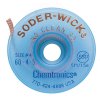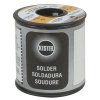Hello,
My experience is limited to some mediocre model building, and that many years ago. I’m looking at a couple of prop/model builds that include electronics kits, and would benefit from the collective experience of the group.
What suggestions and recommendations would you have for someone looking to purchase a soldering iron? It looks like there are a couple of different configurations, varying wattage, etc.
Thank you in advance for your wisdom!
My experience is limited to some mediocre model building, and that many years ago. I’m looking at a couple of prop/model builds that include electronics kits, and would benefit from the collective experience of the group.
What suggestions and recommendations would you have for someone looking to purchase a soldering iron? It looks like there are a couple of different configurations, varying wattage, etc.
Thank you in advance for your wisdom!







